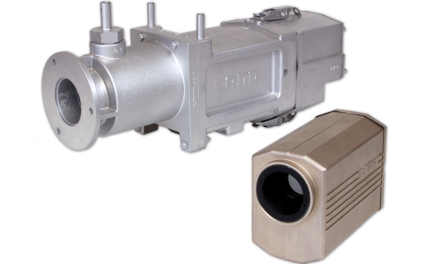 Many process applications are heavy energy users, but identifying where to make improvements can be challenging, says Richard Sturt, business development manager – Process Industries, Rockwell Automation. Here he explains the role of energy monitoring systems applied to water, air, gas, electricity and steam (WAGES)?usage
Many process applications are heavy energy users, but identifying where to make improvements can be challenging, says Richard Sturt, business development manager – Process Industries, Rockwell Automation. Here he explains the role of energy monitoring systems applied to water, air, gas, electricity and steam (WAGES)?usage
On the basis that you can’t control what you can’t measure, monitoring is an obvious place to start looking for efficiency improvements. There will be exceptions to this where the wasted energy is obvious and quick payback calculations can be made, but even then, without monitoring it may be difficult to prove the savings have actually been made. In most cases, to optimise efficiency it is important to measure how energy use relates to a unit of production rather than just having a monthly energy bill for a whole facility.
Developing a monitoring system will typically involve installing meters for gas, electricity and any other power supplies, and using a communications network to pull the information into an energy monitoring software package. Ideally a common plantwide control system and network infrastructure would be used to gain access to the required data.
Energy monitoring systems are usually expanded to cover all utilities on the site; water, air, gas, electricity and steam usage (often termed WAGES). For companies with multiple sites it may be beneficial to install the same system across all sites so comparisons can be made. This allows for the identification and replication of observed ‘best practice’ models. A good monitoring system will also alert you to potential maintenance issues if energy usage for a given production rate changes over a period of time.
Cutting energy costs can be straightforward and reap quick savings. Many process systems, for example, still use fixed speed motors for fans and pumps with dampers/throttles or no control of flow rates, making them suitable candidates for the use of variable frequency drives. For example, a cement plant that traditionally used damper control systems with fixed speed motors had fans at the plant always running at full capacity – even when the facility wasn’t producing product. Using variable frequency drives, kiln energy consumption was reduced, saving over £75,000 per year.
When looking at energy savings it is possible to look at individual pieces of equipment such as large motors or boilers and make improvements on a case by case basis, but most process plants have multiple interacting processes where making changes to one part of the system will have an effect on other parts of the process.
A glass manufacturer who replaced fixed speed motors, used for cooling and recirculation fans, with variable speed drives made an energy saving of over 50%. Replacing three fans that ran at 1800rpm with two at 1500rpm and one at 1350rpm reduced the power usage from 56kW to 21kW.
Process monitoring was required to ensure that product quality was not affected. An unexpected benefit was that reducing fan speeds also reduced the gas consumption used in the oven. In this case, the unexpected impact was positive, but care should be taken to ensure that savings in one area don’t result in additional energy being expended in another area.
To minimise capital expenditure, it is beneficial if improvements can be made by changing the way a plant is controlled rather than changing the plant equipment. Model Predictive Control (MPC) can look at a large number of variables in a process plant and optimise energy usage in real-time. The MPC software can calculate the control movements required to optimise energy usage and counteract changes in raw materials or external influences such as temperature or humidity changes.
Another area to examine is whether the physical process plant has been designed to optimise energy efficiency. Many process applications include energy usage for heating and power generation and waste energy flows out of the process. There may be opportunities to redesign the process to maximise the use of heat generated by different areas of the plant and reuse it in other parts of the process.
One example of this is on an island with a small population. Energy was expensive due to the island’s remote location, so to reduce consumption, a school and a hospital are now heated using an automated heat reclamation system from the nearby power station. Heat that would previously have been lost is recycled and automatically managed to provide climate control for each building at a fraction of the cost of buying energy to achieve the same effect. The carbon footprints of both the power station and the public buildings are reduced. Thermal oil was used for heat transfer rather than traditional steam or water systems, making the project cost effective.
As energy prices rise and look set to rise even further, the return on investment for improving your process control systems becomes shorter and shorter. Add to this the compliance issues concerning carbon emissions and the argument for improving energy efficiency is a strong one.



